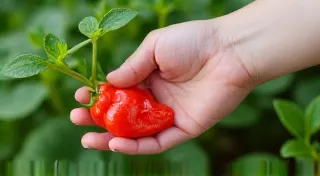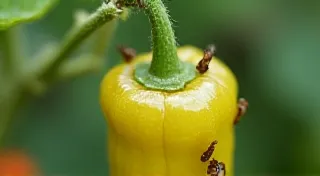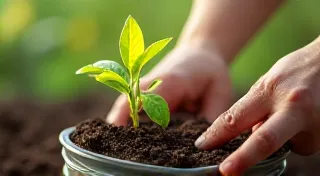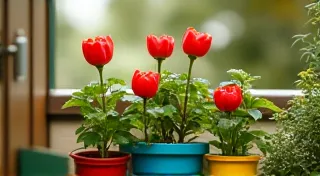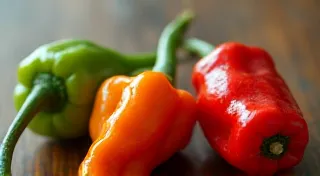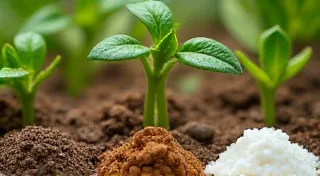Companion Planting for Peppers: Maximizing Growth and Flavor
Growing specialty peppers like ghost peppers and scotch bonnets can be incredibly rewarding, but achieving a bountiful harvest requires more than just good seeds and sunshine. Companion planting – strategically pairing your pepper plants with other beneficial flora – can significantly enhance their growth, boost their flavor, and naturally protect them from pests. This guide explores the best companion plants for your pepper crops, offering a step-by-step approach to maximizing your garden's potential.
Why Companion Plant with Peppers?
Companion planting isn't just a trend; it’s an ancient practice rooted in observation. Peppers, particularly the hotter varieties, can be susceptible to certain pests and diseases. They also benefit from nutrient-rich soil and adequate pollination. Companion plants can address these challenges, offering a holistic approach to pepper growing.
Top Companion Plants for Peppers
Here’s a breakdown of plants that work wonderfully alongside your pepper varieties:
1. Basil – The Pepper’s Best Friend
Basil and peppers are a classic combination for a reason! Basil repels aphids, spider mites, and whiteflies – common pepper pests. Its strong scent also masks the pepper's aroma, making it less attractive to certain insects. More importantly, basil is believed to improve the flavor of peppers, adding a subtle sweetness.
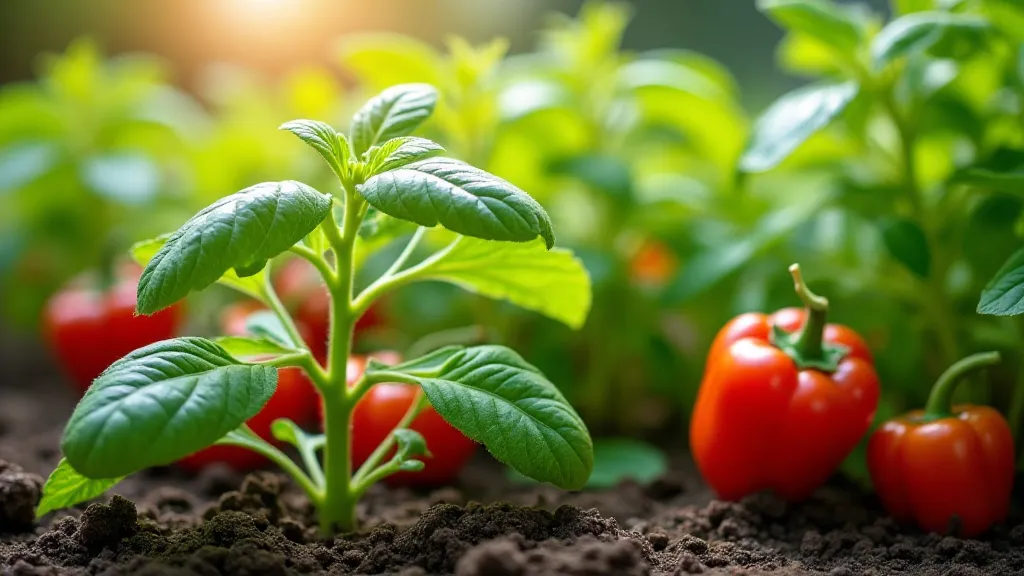
2. Marigolds – Pest Control Powerhouse
Marigolds are renowned for their ability to deter nematodes and other soil pests. They release a compound called alpha-terthienyl into the soil, which effectively disrupts the nematode lifecycle. Their bright flowers also attract beneficial insects like ladybugs and hoverflies, further contributing to pest control.
3. Carrots – Rooting for Success
Carrots and peppers have a symbiotic relationship. Carrots help break up the soil, improving aeration and drainage around your pepper plants. They also absorb nutrients from the deeper soil layers, reducing competition for resources.
4. Onions & Garlic – Aromatic Protection
Like basil, onions and garlic have a pungent aroma that repels various pests, including aphids, cabbage moths, and even deer. Planting them around your pepper patch provides an added layer of protection.
5. Tomatoes – Sharing Space, Sharing Benefits
While both tomatoes and peppers are heavy feeders, they can thrive when grown together. Tomatoes can help improve soil structure, and their deep roots can bring nutrients up to the pepper plants. Just be mindful of space requirements and ensure adequate sunlight for both.
6. Calendula - Beauty and Benefits
Calendula is a beautiful addition to any garden and offers a host of benefits to your pepper plants. It attracts beneficial insects like lacewings and ladybugs, which prey on aphids and other pests. It also acts as a trap crop, drawing pests away from your peppers.
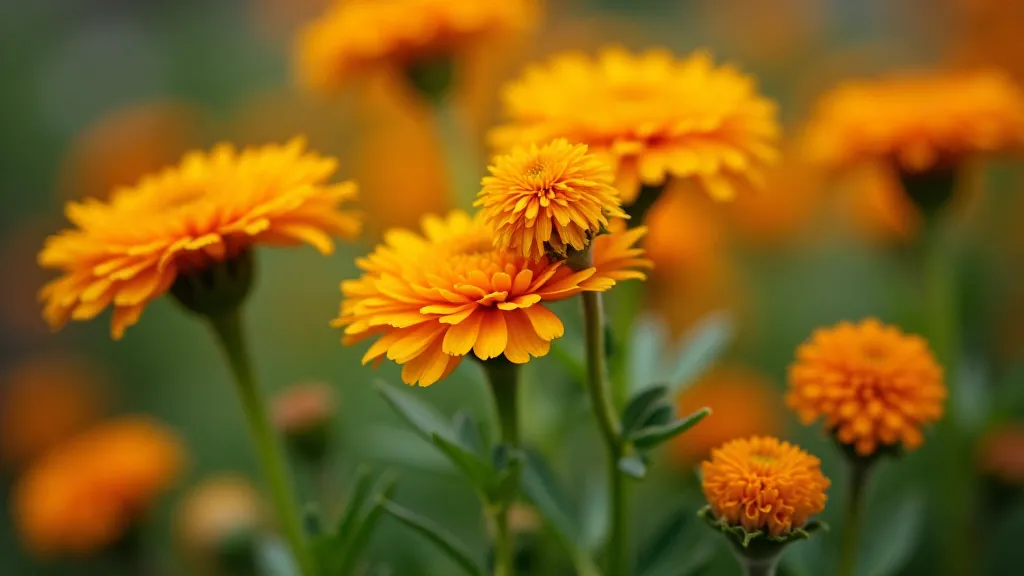
Things to Avoid: Plants to Keep Away From Peppers
Not all plants are friendly companions. Certain plants can hinder pepper growth or attract unwanted pests.
- Brassicas (Broccoli, Cabbage, Kale): These plants can compete with peppers for nutrients and water.
- Fennel: Fennel inhibits the growth of many plants, including peppers.
- Potatoes: Potatoes are susceptible to blight, a disease that can also affect peppers.
Implementing Companion Planting in Your Pepper Garden
Here are a few practical tips for incorporating companion planting into your pepper garden:
- Plan Ahead: Consider the mature size of all plants when deciding on companion pairings.
- Interplanting: Plant companion plants directly amongst your pepper plants for maximum benefit.
- Succession Planting: Rotate companion plants throughout the growing season to maintain soil health and pest control.
- Observation: Pay close attention to your plants and adjust your companion planting strategy as needed.
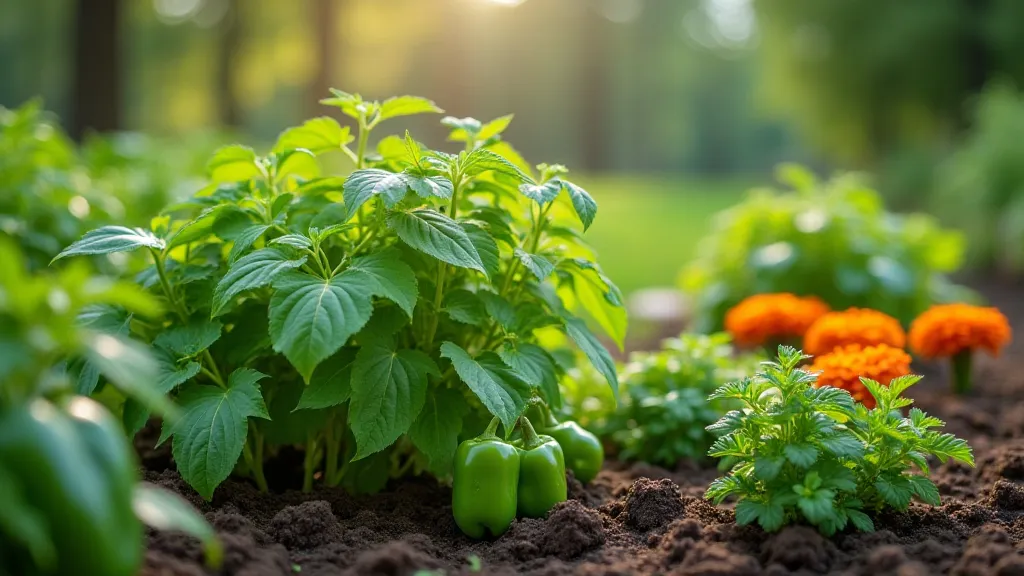
Conclusion
Companion planting is a powerful tool for any pepper grower, especially those cultivating challenging varieties like ghost peppers and scotch bonnets. By strategically combining plants that offer mutual benefits, you can create a thriving, resilient pepper garden that delivers a bountiful harvest and exceptional flavor. Happy growing!
